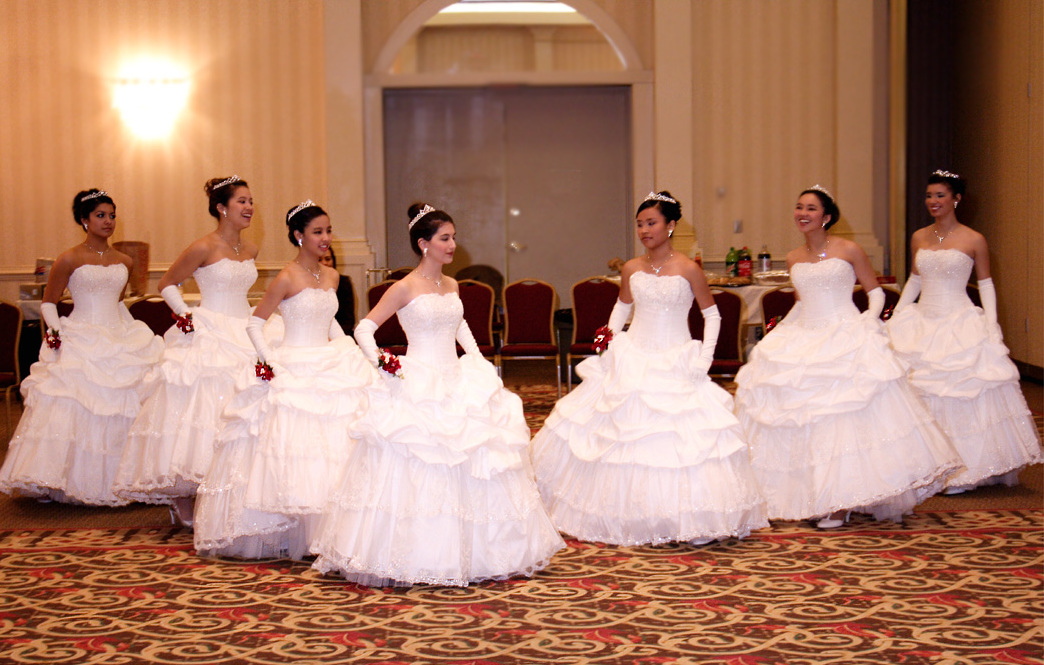By Stephanie Nedoshytko

A while ago, I came across a surprising phenomenon—debutante balls run by Ukrainian organizations in the United States. The event replaces traditional vyshyvannas with tuxedos and floor-length white gowns. My only knowledge about debutante balls comes from what I’ve seen on TV, from shows like Gilmore Girls to Gossip Girl. Make no mistake, I am no stranger to fancy malankas or zabavas, but I will admit I was shocked Ukrainian organizations organized their own debutante balls. It wasn’t the fancy attire that caught me by surprise, but rather the underlying classist, sexist, and patriarchal connotations.
To understand my concern, let’s look at the background of debutantes. The history of these balls trace back to Western Europe and they were most popular during 1780-1914. Relevant to the Ukrainian context, these events were popular amongst the bourgeoisie in the Austro-Hungarian Empire. The upper echelon of society would present their daughters, the debutantes, for marriage to other members of the aristocracy. This exclusive event allowed only the wealthiest and highest nobility to participate. It was not a place for the common folk. Its main purpose was to show off young daughters as marriageable and high-class real estate. This practice started to fade in the mid-1900s. Notably, in 1958 Queen Elizabeth stopped the practice in the UK.
To my knowledge, Ukrainian debutantes did not take hold in Canada. However, debutante balls are still fairly popular with our neighbours to the south. Girls aged between 14-18 are the typical debutantes presented. Prior to the big event, they are taught “proper social etiquette” and learn a formal waltz alongside their escort. At the ball, each debutante is presented individually. When called, her escort leads her to the front of the hall where she is required to bow to society. Instead of being presented for marriage, modern debutante ball holders state the event is “a way for young women to show themselves and what they’ve accomplished.” As a young woman myself, it’s difficult for me to find the intrigue in this event given its historical background.
While I’ve never witnessed or attended a modern debutante ball, I am puzzled as to why the Ukrainian community would choose to throw or participate in an event similar to this. By no means am I intending to shame the organizers of these events or their participants, but I feel there are far better ways to celebrate the youth of our community. If the Ukrainian American community truly wants to showcase women’s accomplishments, it shouldn’t come in a perplexing and antiquated format. A genuine celebration of women’s accomplishments leaves the pricey white dress and escort behind.
As Ukrainians, we do not traditionally celebrate our culture through debutante balls. Some compare debutantes to bat mitzvahs or quinceañeras, claiming similarity. However, this analogy misrepresents these other cultural events and tries to equate a debutante for what it is not. Debutantes hold no cultural weight for Ukrainians. Despite what the debutantes in this video state about their own event in the US, це не є наша традиція. Instead, by celebrating debutantes we are adopting the traditions of one of Ukraine’s colonizers and occupiers—Austro-Hungary.
I agree we as a North American community have modernized. Some of us no longer wear vyshyvannas to malanka and from time-to-time we hold fancy parties. I thoroughly enjoy my time getting dressed up. However, in my opinion, debutante balls don’t represent modernization. Instead, these events represent exclusivity and values from Western Europe hundreds of years ago that were supported by only the upper-most class of aristocracy, coupled with patriarchal ideals.
Maybe I have misunderstood the Ukrainian community’s participation; however, the concept still leaves me with discomfort and disappointment. I am sure debutantes and their families enjoy participating. But, perhaps more reflection is needed on the meaning behind the event. We should consider how these events exclude members of our community, including those not as financially able as well as нові прибулі. We should consider why the unnecessary need exists to present young daughters to “society” for acceptance and not sons. We should consider why these events have been phased out in numerous communities decades ago.
As a Canadian, I realize there are differences between Ukrainian-Canadian and Ukrainian-American culture. But, I also believe we need an inclusive pan-Ukrainian North American community that celebrates Ukrainian culture and traditions and welcomes new ones. Maybe it’s time to scrap the aristocratic debutante ball and disconcerting presentation of young daughters, and instead, celebrate something uniquely Ukrainian.

